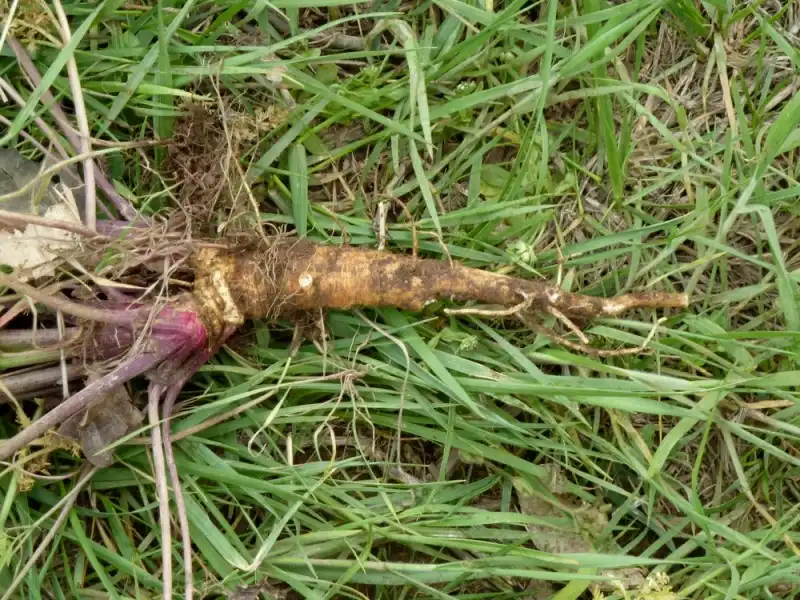Poison hemlock (Conium maculatum) is a highly toxic plant that is native to Europe and naturalized in North America. It is a member of the carrot family and can grow up to 6.6 ft tall with white, small flowers and fern-like leaves.
The plant contains several toxic alkaloids, including coniine, which can cause respiratory failure and death if ingested by humans or animals. Symptoms of poisoning include abdominal pain, nausea, vomiting, muscle weakness, and confusion. In severe cases, it can lead to respiratory failure and death within a few hours of ingestion.
Poison hemlock is commonly found near water sources and waste areas, and it is often mistaken for wild carrots or parsley. It is important to properly identify the plant and to keep livestock, pets, and children away from it.
In addition to its toxic properties, poison hemlock is also considered an invasive species in many areas and can outcompete native plants for resources. Efforts to control its spread and limit its impact on the environment include removing it from areas where it is not native, using herbicides to kill it, and planting native species to replace it.
Highly Dangerous Plant
Poison hemlock is a highly toxic plant species that has a long history of use in traditional herbal medicine, dating back to ancient Greece and Rome. However, despite its historical use, poison hemlock is now considered a highly dangerous plant that should be avoided due to its toxic effects.
Use in Herbal Medicine
The use of poison hemlock in traditional herbal medicine was primarily as a sedative and pain reliever. It was used to treat various conditions, including digestive problems, respiratory disorders, and headaches. However, despite its historical use, poison hemlock is now considered a highly toxic plant that should be avoided due to its toxic effects. The plant contains several toxic alkaloids, including coniine, which can cause severe symptoms such as muscle weakness, paralysis, and respiratory failure. Poison hemlock was famously used to execute the philosopher Socrates in ancient Greece.

Try to use Safer and less Toxic Herbs
In modern herbal medicine, poison hemlock is not used for any therapeutic purposes. Instead, other safer and less toxic herbs and natural remedies are used to treat similar conditions. For example, valerian root is often used as a natural sedative and pain reliever, while ginger and peppermint are commonly used to treat digestive problems.
Self Medication
Despite the dangers of poison hemlock, some people still attempt to self-medicate with this plant. This is extremely dangerous and can lead to severe health consequences, including death. In addition, poison hemlock can be easily confused with other plants, making it difficult to identify and avoid.
Dangerous for Self Medication
- One of the main dangers of self-medicating with poison hemlock is the risk of accidental poisoning. Even small amounts of this plant can be lethal, and the symptoms of poisoning can develop rapidly. If ingested, the symptoms of poison hemlock poisoning can include muscle weakness, paralysis, and respiratory failure, which can be life-threatening.
- Another danger of self-medicating with poison hemlock is that it can interact with other medications and supplements, leading to adverse reactions. For example, if taken with certain blood-thinning medications, poison hemlock can increase the risk of bleeding. In addition, if taken with certain prescription drugs, poison hemlock can increase the risk of toxicity and other negative side effects.
- Finally, self-medicating with poison hemlock can also lead to the development of long-term health problems. For example, repeated exposure to this toxic plant can lead to liver and kidney damage and can weaken the immune system, making it more vulnerable to infections and other illnesses.
Read: What’s the most Poisonous Plant in the world?
Conclusion
Self-medicating with poison hemlock is extremely dangerous and should be avoided. Instead, if you are experiencing symptoms that you believe may benefit from herbal medicine, it is essential to consult with a qualified healthcare professional. They can help you determine the most effective and safe treatment options for your specific health needs. Remember, the use of herbs and natural remedies can be beneficial when used properly and under the guidance of a qualified healthcare professional.
Poison hemlock is a highly toxic plant that poses a threat to humans, animals, and the environment. It is important to properly identify and avoid it, and to take steps to control its spread.



